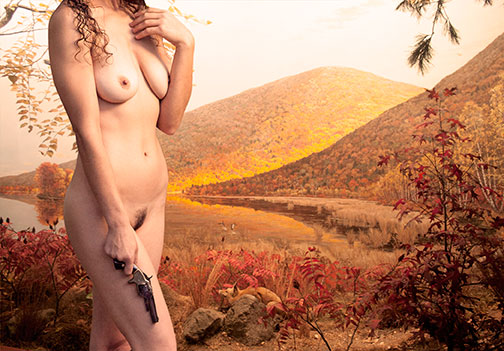


Mei Xian Qiu
"I Love You"January 14-February 20, 2016
Reception: Saturday, January 16, 7-9pm
In the artists words:
"I started to think towards two divergent rivulets. One, the phrase "I love you" as used in daily parlance, aggressive, vulnerable, necessary, and common simultaneously, the most important frightening thing; it was also a gateway to what you, yes, as an individual with a perceived sense of identity, believe others want you to say to them; it was a qualifier to other more alluring and emotionally specific concerns. How do we trade in love, sex, happiness?"
An inspiration for the series had been "Le Dejeuner Sur L'Herbe" by Edouard Manet, depicting a nude woman at a picnic with 2 well dressed men. Painted in a rough, bold manner, this painting caused controversy in 1862 for its shocking and raw depiction of gender inequality, revealing the nude tantalizing figure as both a probable prostitute as well as an allegorical muse. Again, there is the study of contrasts -- the feminine versus the masculine, the naked versus the clothed, the elite versus the commonplace, and the innate aggression versus the vulnerability of the act of nudity itself.
Which led to secondly, maybe not so divergently, the fetishization and objectification of inspiration, of the muse, of all passion—the shattering, obvious, hard edge of this that tail gates easier romanticized views. The series, "I love you” examines the intersections of adoration and desperation, victim and aggressior, oppression and self oppression, globalism, even colonialization and provincialism."
.
This site and its entire contents © 2004-2015 Los Angeles Center For Digital Art
All Rights Reserved.Works of individual artists remain the intellectual property and are copyrighted by their respective authors. No unauthorized reproduction, all rights reserved.
|
|



